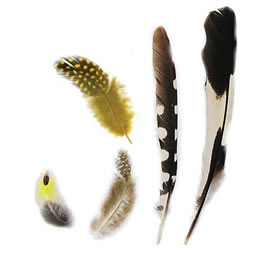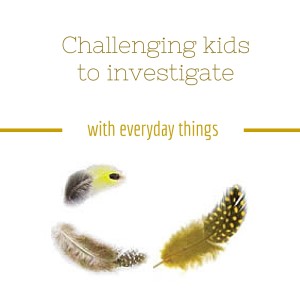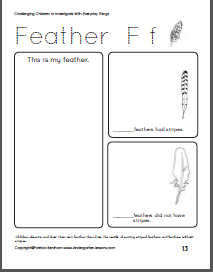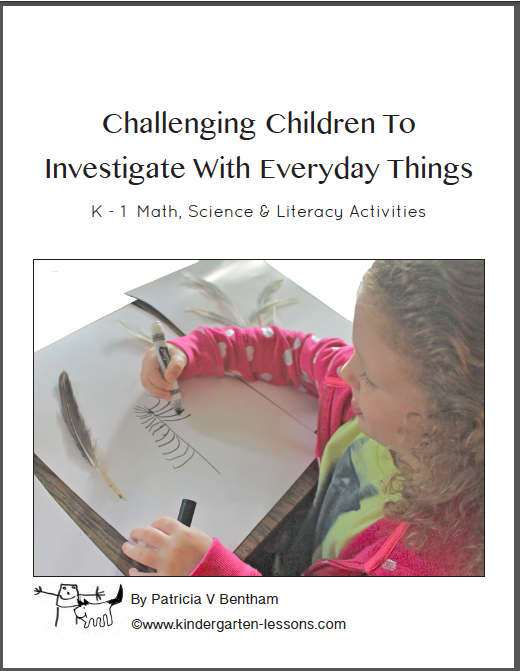This sample lesson:
- Shows you how to present activities to students in ways that improve their ability to make sense of measurement and data concepts,
- Helps you present math in meaningful ways that promote exploration and problem solving,
- Shows you how to encourage students to be creative with hands-on math and science experiences that helps them remember new vocabulary,
- Gives you an idea of the system I developed in my Ebook, Challenging Children to Investigate With Everyday Things
In this lesson, the children were asked to bring a feather to school. After the children had time to investigate the feathers at the science center during play time, they come together as a group. All children place their feathers on the center of the carpet/floor, then sit down in a circle around them.
Start with observation & inquiry type questions
What do you notice about the feathers?
How are they the same?
How are they different?
How can we sort the feathers?
A student may suggest sorting by size.
Which feather is the largest?
Which is the smallest?
Another student may suggest sorting by width or by feathers that are striped and feathers that are not striped.
Let’s make a long line of feathers, starting at the red block with the widest and ending here at the blue block with the narrowest. Everybody takes a turn placing his or her feather with student or teacher suggestions to rearrange items when necessary.
Now let’s sort the feathers by feathers with spots and feathers without spots. We can put the feathers with spots on this mat and the feathers without spots on the other mat.

Continue with further investigations at different times or the next day
Are there more lighter colored feathers or more darker colored feathers? Are there fewer … or fewer …?
John noticed that his feather floated up when he puts it above the hot air vent on the floor. Do all the feathers float when we put them over the air vent? How could we all test them?
When there’s a large quantity of the same items, it’s easy to use them for:
- Observing with magnifying glasses
- Counting
- Graphing
- Extending vocabulary
- Comparing
- Sorting and classifying
- Making patterns
- Making collections
- Making labels for collections
- Writing about “what I noticed”
Recording Observations
After children are challenged to investigate an item, model filling in a recording sheet similar to the handouts. Children then record an observation or something that was interesting to them, to the best of their ability.
A sample recording sheet from Challenging Children to Investigate With Everyday Things, is shown on the right.
The children’s ability to record their investigations will increase as you continually model the process for the children. The sheets are also valuable examples of the children’s thinking, to help parents have an idea of what their child is learning about at school.
For more detailed instructions…
If you’re interested in this type of curriculum, more detailed instructions on how to teach children to investigate and record their observations are included with my ebook below, which conveniently includes ready to print recording sheets for an entire year.
Return to the ebook page to learn more …
Or if you’re ready to purchase the ebook now,
for a limited time I’m offering it on sale for $10US instead of the regular price of $19.99 US!
Click the button below to purchase, “Challenging Children to Investigate With Everyday Things” now with Paypal or a credit card, using PayPal Secure Checkout.



